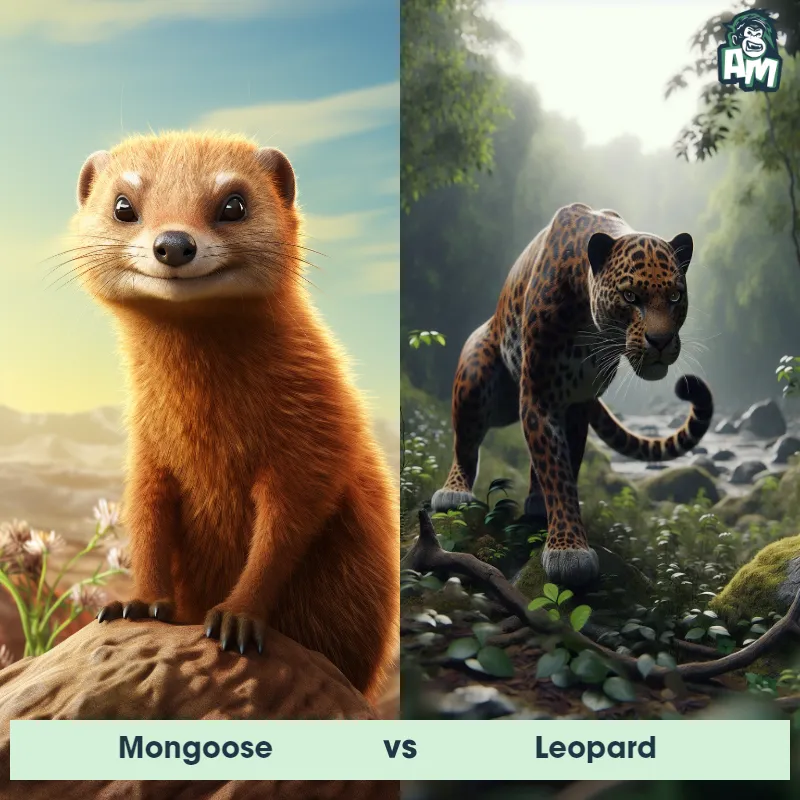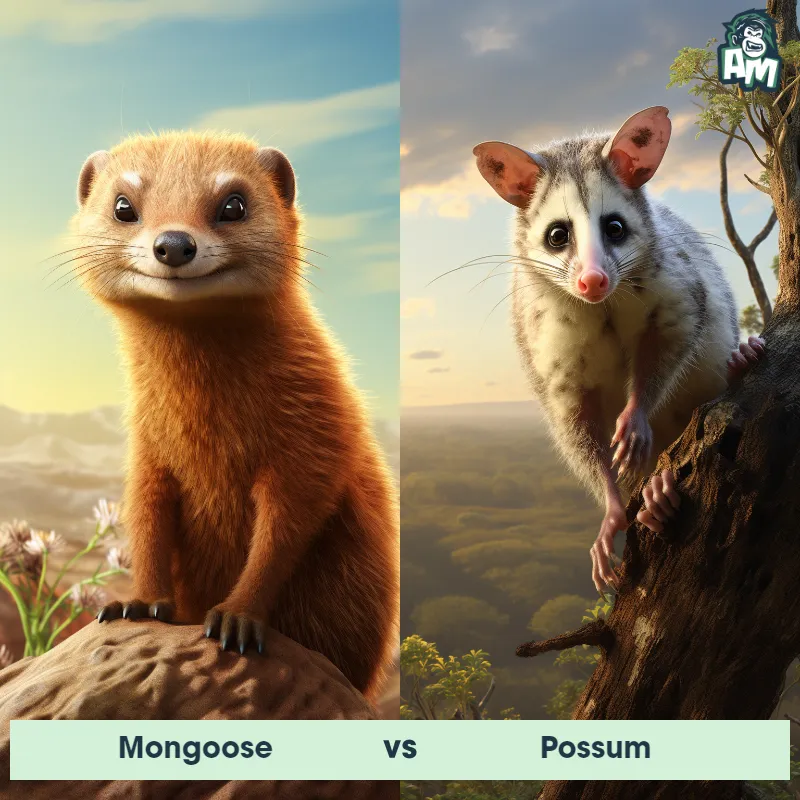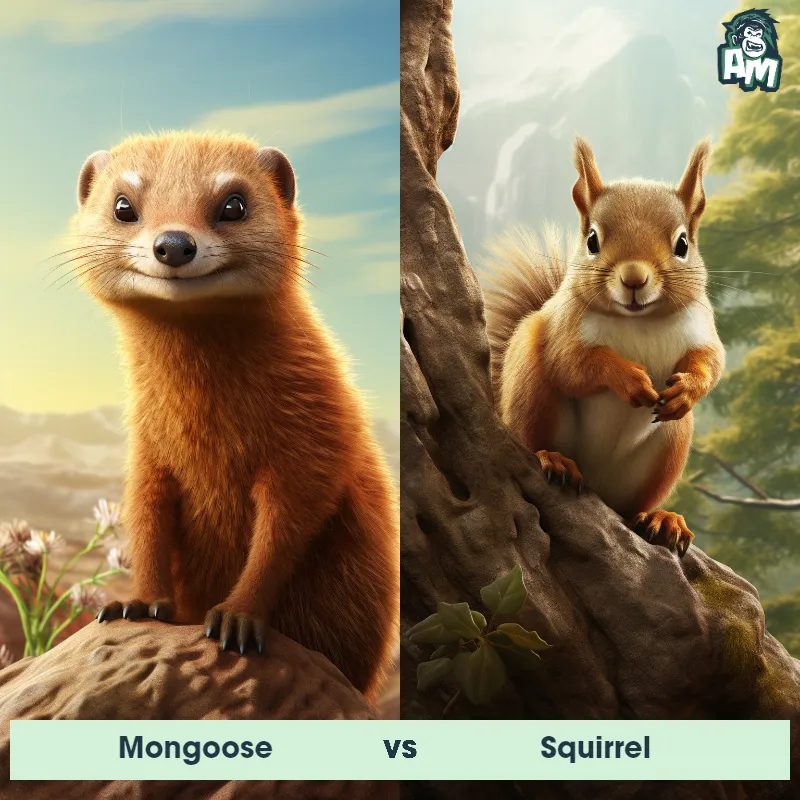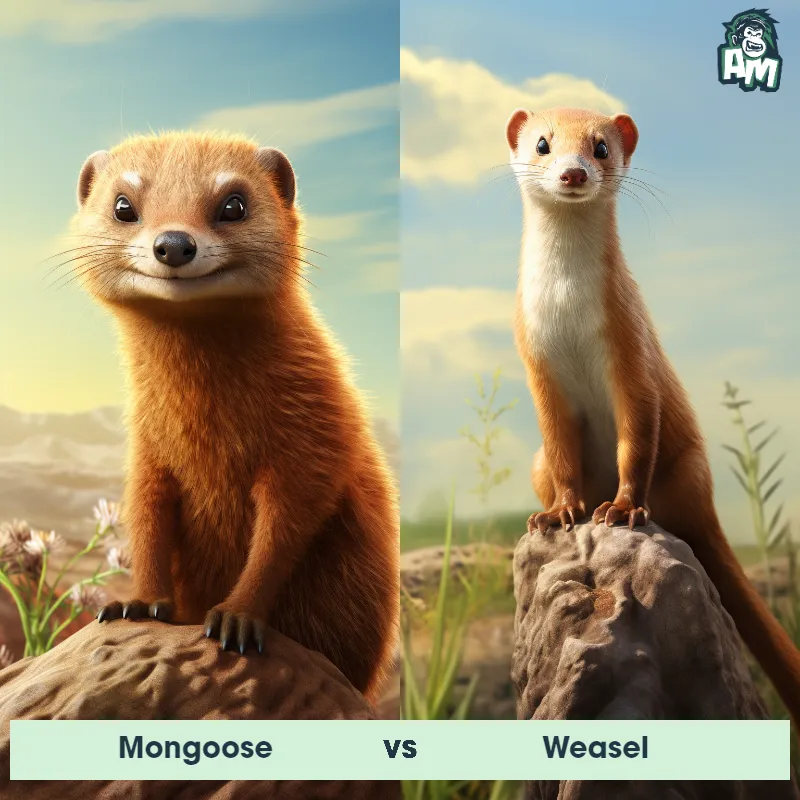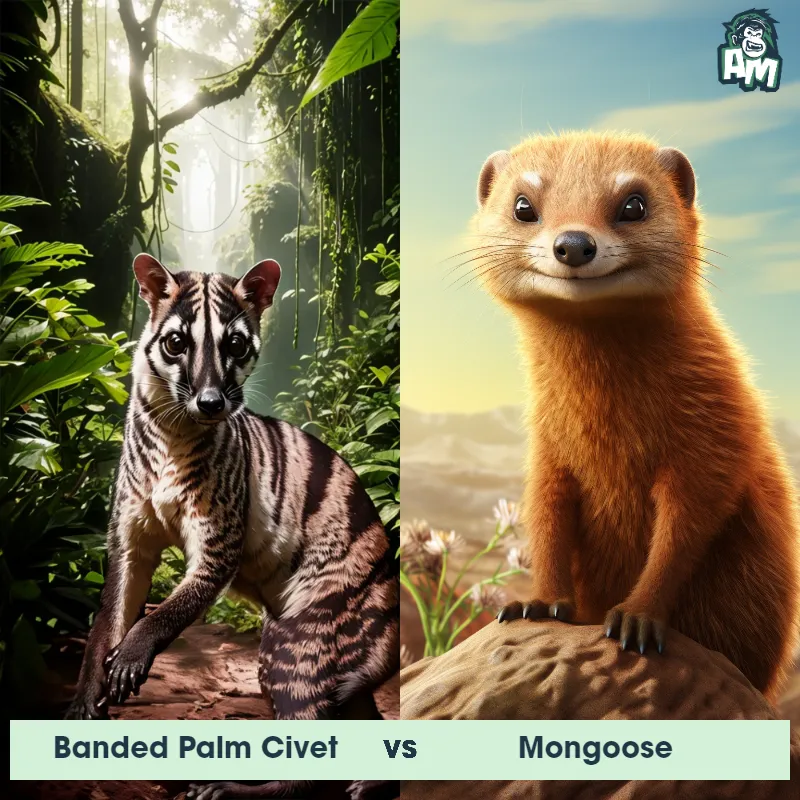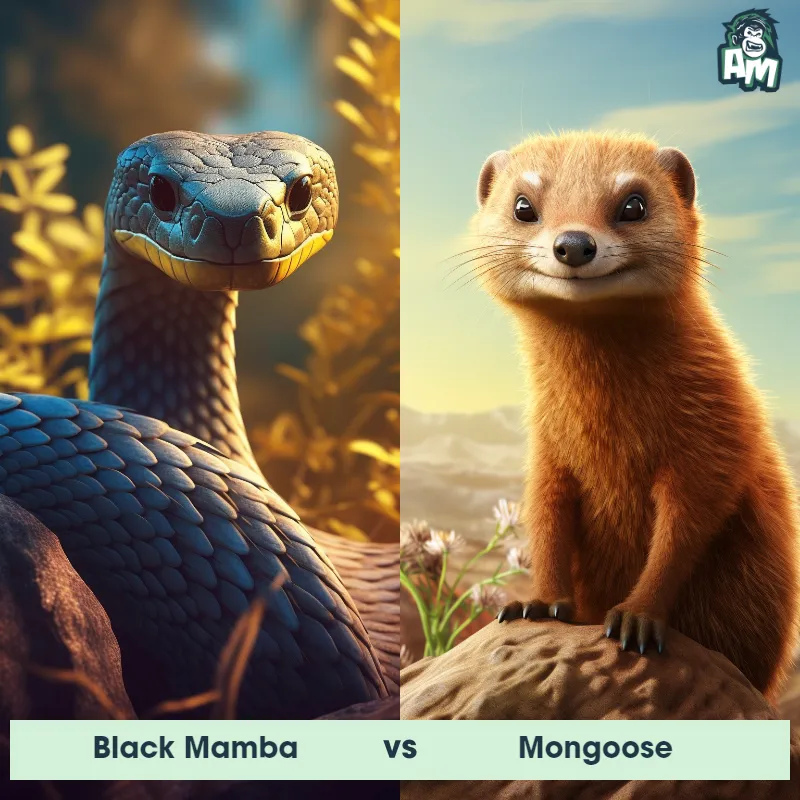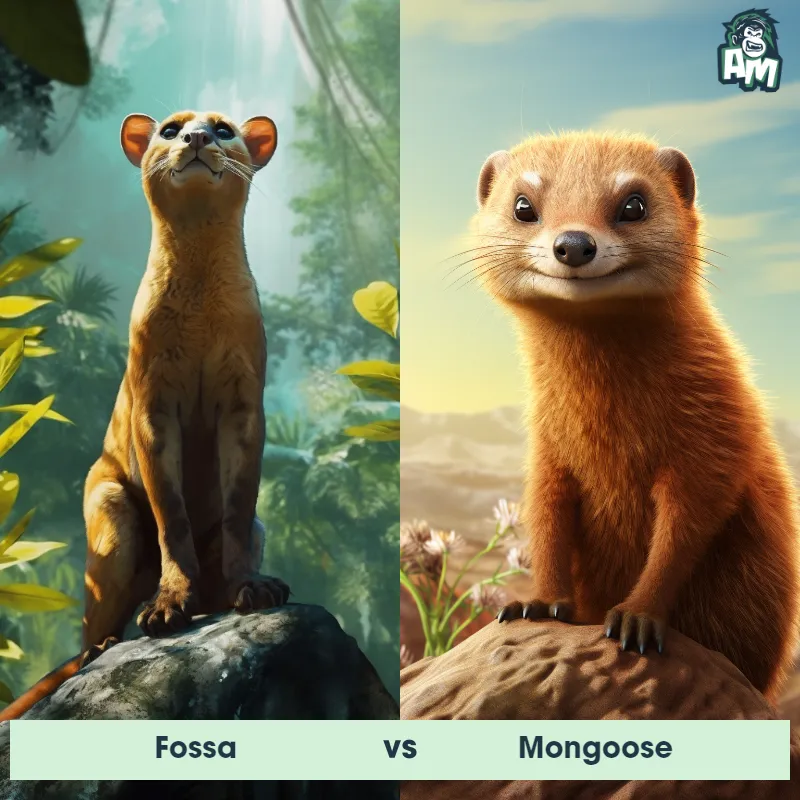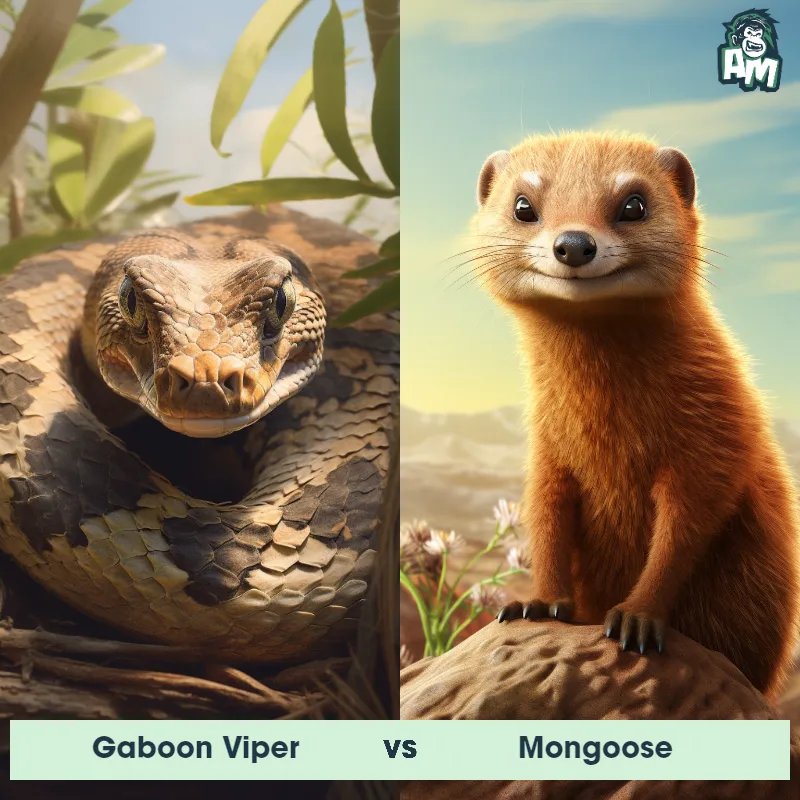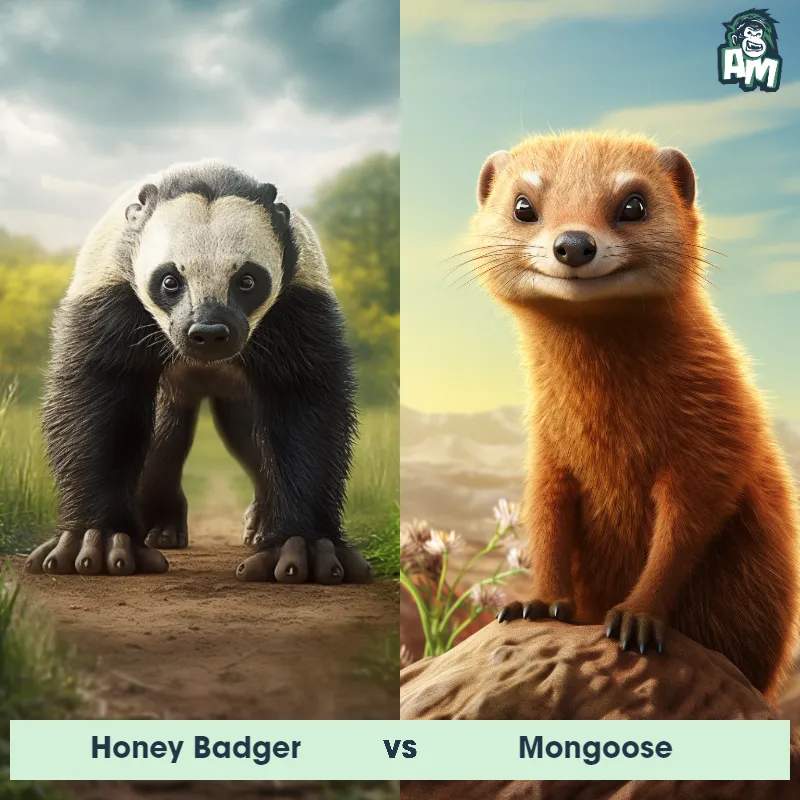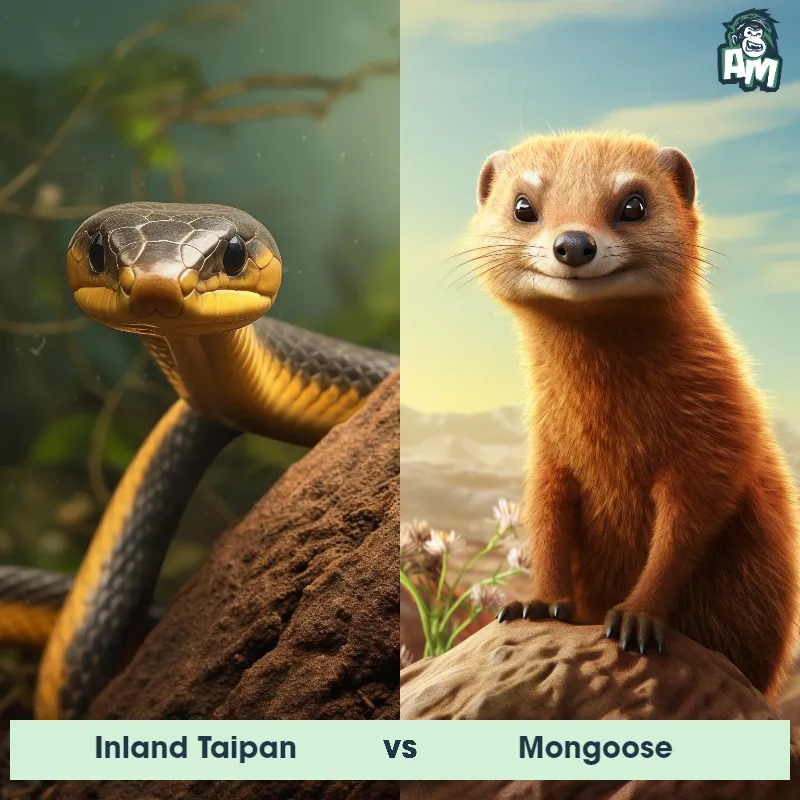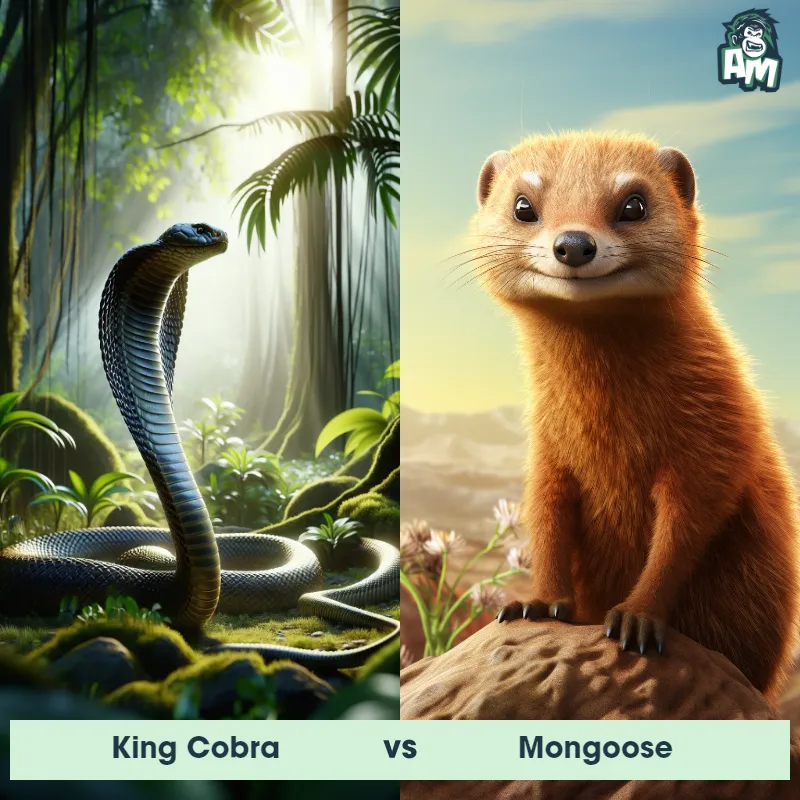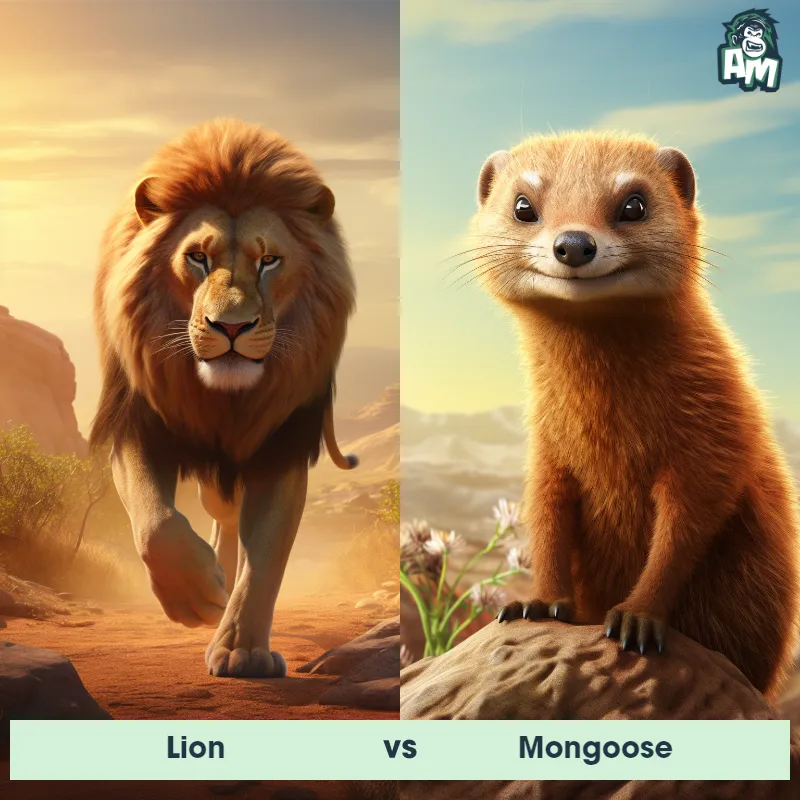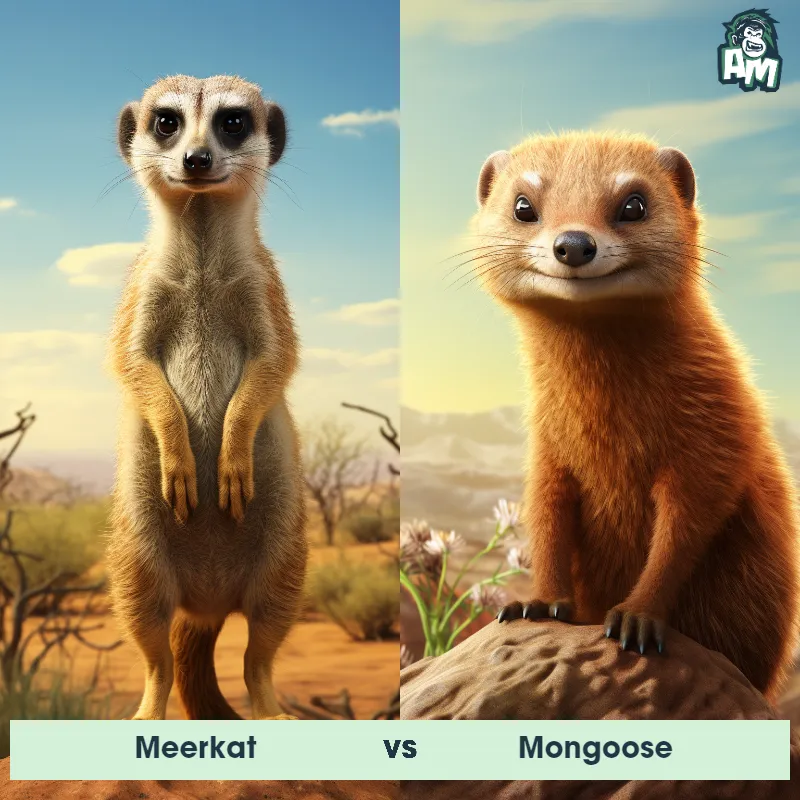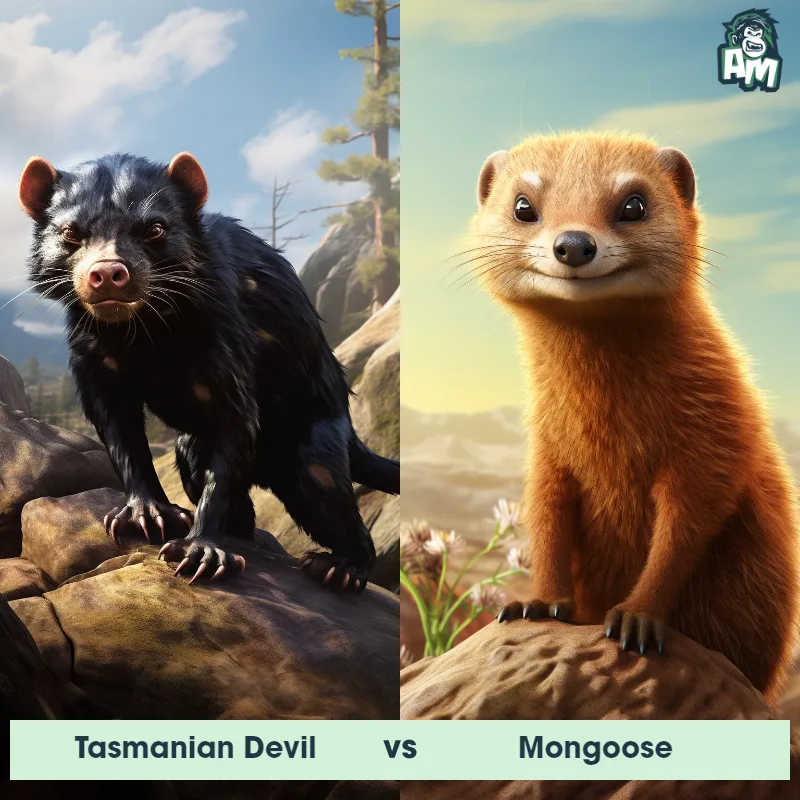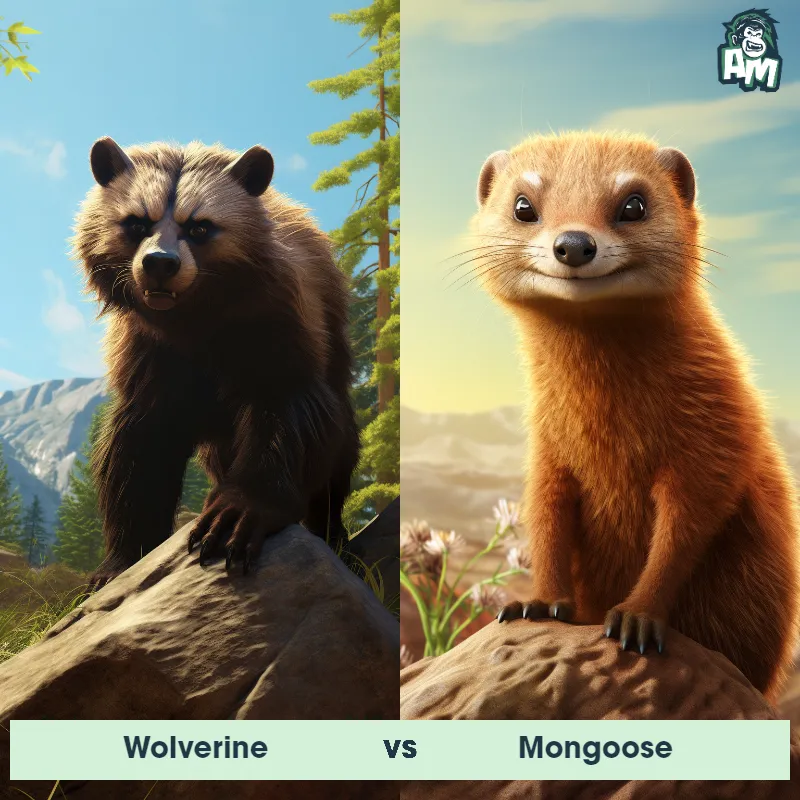The Mongoose
The mongoose is a small carnivorous mammal native to Africa and Asia. It is known for its slender body, pointed muzzle, and sharp claws. Most species of mongoose have a long fluffy tail and short legs. They have a reputation for their agility and speed, which aids them in hunting prey such as small rodents, snakes, birds, and insects. Mongooses typically live in burrows in open grasslands or forests and are highly social animals, often living in close-knit family groups.
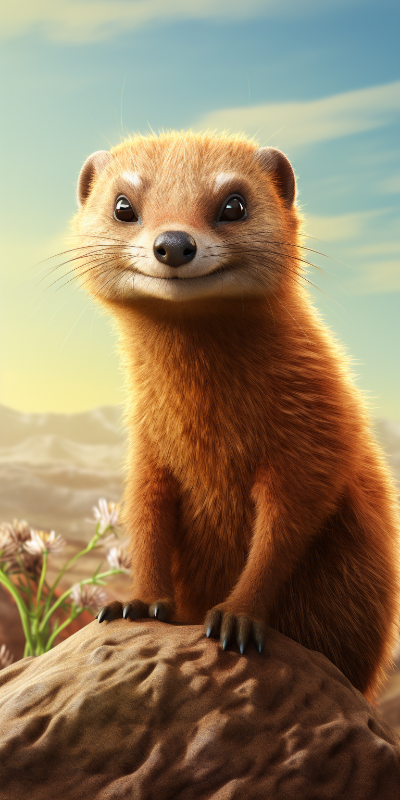
| Mongoose | |
|---|---|
| Size | 1-4 feet (0.3-1.2 meters) |
| Weight | 0.5-11 pounds (0.2-5 kilograms) |
| Speed | 20mph (32km/h) |
| Key Strength | Speed, agility, and resistance to snake venom |
| Biggest Weakness | Small size and solitary nature (for some species) |
| Scientific Name | Herpestidae |
| Family | Carnivora |
| Habitat | Diverse range of habitats including forests, grasslands, and deserts |
| Geography | Africa, Asia, and Southern Europe |
| Diet | Carnivorous, primarily insects, rodents, birds, eggs, and occasionally venomous snakes |
| Lifespan | 7 years - 13 years |

The Mongoose
The mongoose is a small carnivorous mammal native to Africa and Asia. It is known for its slender body, pointed muzzle, and sharp claws. Most species of mongoose have a long fluffy tail and short legs. They have a reputation for their agility and speed, which aids them in hunting prey such as small rodents, snakes, birds, and insects. Mongooses typically live in burrows in open grasslands or forests and are highly social animals, often living in close-knit family groups.
Fun Fact: Despite their small size, mongooses are fearless fighters and are known for their ability to take on venomous snakes, such as cobras. They use their nimble movements and quick reflexes to dodge snake strikes and deliver rapid bites to the snake's head, which can ultimately lead to the snake's death.
| Mongoose | |
|---|---|
| Size | 1-4 feet (0.3-1.2 meters) |
| Weight | 0.5-11 pounds (0.2-5 kilograms) |
| Speed | 20mph (32km/h) |
| Key Strength | Speed, agility, and resistance to snake venom |
| Biggest Weakness | Small size and solitary nature (for some species) |
| Scientific Name | Herpestidae |
| Family | Carnivora |
| Habitat | Diverse range of habitats including forests, grasslands, and deserts |
| Geography | Africa, Asia, and Southern Europe |
| Diet | Carnivorous, primarily insects, rodents, birds, eggs, and occasionally venomous snakes |
| Lifespan | 7 years - 13 years |
Mongoose Matchups
We use AI to simulate matchups between the Mongoose and other animals. Our simulation considers size, strength, and natural predatory behaviors to determine the most likely outcome.

Can't find the Matchup you want?
Create Your Own MatchupMongoose: Diet, Predators, Aggression, and Defensive Behaviors
What do Mongoose eat?
Mongoose are primarily carnivorous animals, feeding on a diet composed mainly of insects such as beetles, termites, and crickets. They also consume small mammals, birds, and eggs when available. Some species of Mongoose have been known to hunt venomous snakes, making them highly beneficial to agricultural areas.
Do Mongoose have any predators?
Mongoose do have predators in the wild, with some of the main ones being large birds of prey, such as eagles and hawks. Additionally, snakes, big cats like leopards, and other carnivorous mammals may prey on Mongoose. However, due to their agility, speed, and ability to fight back, Mongoose are able to evade or defend themselves from predators effectively.
Are Mongoose aggressive?
Mongoose are known for being territorial animals and can display aggression towards both intruding individuals of their own species and predators. They are highly protective of their food sources and territory but are generally not aggressive towards humans unless provoked.
Do Mongoose fight?
Yes, Mongoose are adept fighters and will engage in combat with rivals or predators to defend their territory, young, or themselves. They use their sharp teeth, strong jaws, and quick reflexes in battles, often resulting in intense and sometimes deadly fights.
How do Mongoose defend themselves?
Mongoose have several defense mechanisms to protect themselves from threats. They have a keen sense of smell and hearing, allowing them to detect danger early and evade it if possible. They are also known for their agility, speed, and ability to stand their ground and fight when necessary. Additionally, some species of Mongoose have adaptations such as thick fur or specialized glands that secrete musk to deter predators.
What is the Mongoose's biggest weakness in a fight?
Despite their fighting skills and defensive tactics, Mongoose are still vulnerable to larger predators or overwhelming numbers of attackers. Their small size and relatively light build make them susceptible to being overpowered by larger animals, especially when faced with multiple opponents. Additionally, despite their agility, they can be injured or killed in confrontations with particularly strong or venomous predators.
Fun Fact: One extraordinary aspect of mongooses is their resistance to snake venom. Among their many adaptations, some species of mongoose have evolved a special protein in their blood that binds to snake venom, rendering it harmless. This adaptation allows mongooses to endure snakebites without severe consequences and continue their predatory activities.
Fun Fact: Mongooses are highly intelligent creatures and possess remarkable problem-solving abilities. They often exhibit complex behaviors such as opening latches or raiding bird nests for eggs, showcasing their resourcefulness and adaptability. This intelligence extends to their communication skills, as they use a variety of vocalizations and body language to communicate with other members of their social groups.



